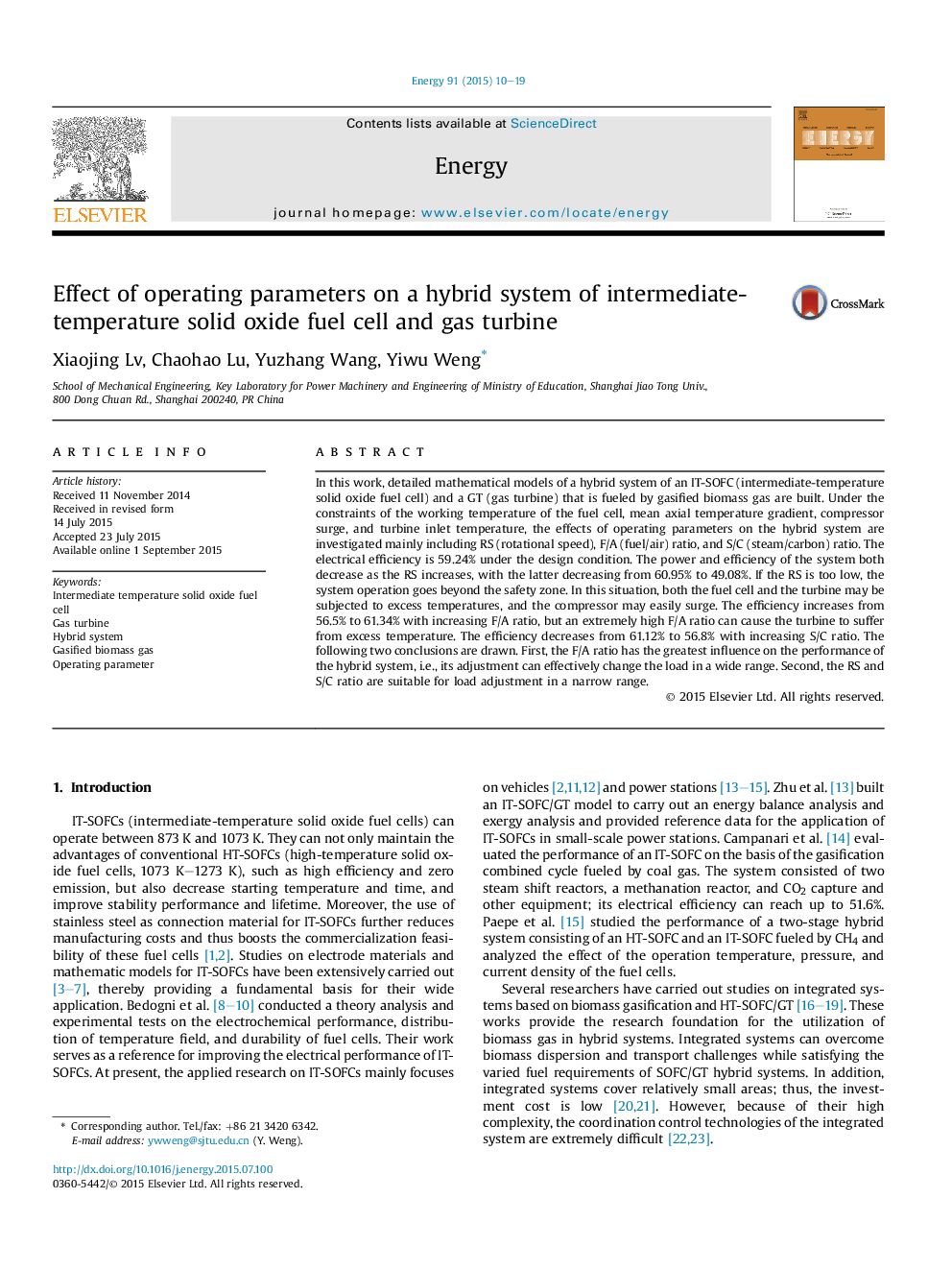| Article ID | Journal | Published Year | Pages | File Type |
|---|---|---|---|---|
| 1731467 | Energy | 2015 | 10 Pages |
Abstract
In this work, detailed mathematical models of a hybrid system of an IT-SOFC (intermediate-temperature solid oxide fuel cell) and a GT (gas turbine) that is fueled by gasified biomass gas are built. Under the constraints of the working temperature of the fuel cell, mean axial temperature gradient, compressor surge, and turbine inlet temperature, the effects of operating parameters on the hybrid system are investigated mainly including RS (rotational speed), F/A (fuel/air) ratio, and S/C (steam/carbon) ratio. The electrical efficiency is 59.24% under the design condition. The power and efficiency of the system both decrease as the RS increases, with the latter decreasing from 60.95% to 49.08%. If the RS is too low, the system operation goes beyond the safety zone. In this situation, both the fuel cell and the turbine may be subjected to excess temperatures, and the compressor may easily surge. The efficiency increases from 56.5% to 61.34% with increasing F/A ratio, but an extremely high F/A ratio can cause the turbine to suffer from excess temperature. The efficiency decreases from 61.12% to 56.8% with increasing S/C ratio. The following two conclusions are drawn. First, the F/A ratio has the greatest influence on the performance of the hybrid system, i.e., its adjustment can effectively change the load in a wide range. Second, the RS and S/C ratio are suitable for load adjustment in a narrow range.
Related Topics
Physical Sciences and Engineering
Energy
Energy (General)
Authors
Xiaojing Lv, Chaohao Lu, Yuzhang Wang, Yiwu Weng,
